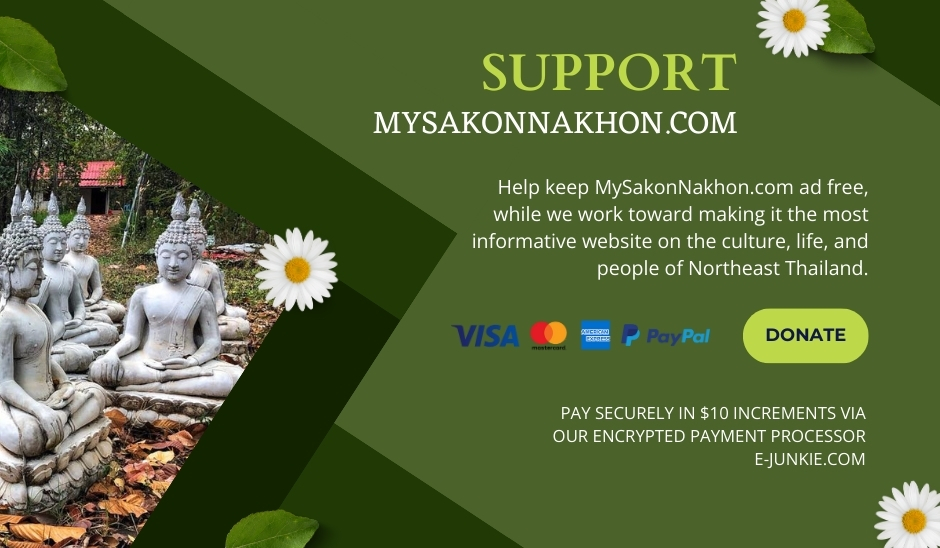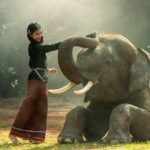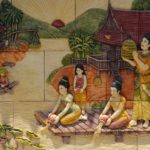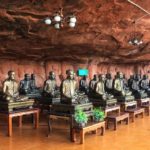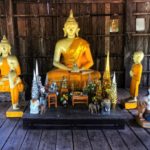
The Meaning of Songkran: Its Days, Legends & Traditions

The traditional New Year’s Day in Thailand, celebrated since ancient times, is known as “Songkran Day” (วันสงกรานต์). In 2024, Songkran activities will vary among the Thai people, and include going to the temple to make merit and honor deceased family members, pouring water over Buddha statues, building sand pagodas at temples, blessing elders by pouring water over their hands, and engaging in games with water to cool down during the day.
Water is viewed as a symbol of cleansing and purification during Songkran, a symbolism that has been overshadowed in recent decades by the “water wars” where young Thais battle in the streets with huge water pistols and people throw iced water from the back of pickup trucks onto anyone in tossing distance. However, the Thai authorities have been cracking down on these water wars, limiting them to strictly defined areas, while promoting traditional Songkran activities.
During Songkran, you’ll often see Thais applying powder or a powdery paste to people’s faces. The powder paste is typically made from talcum powder, food coloring, and water, and often has a pleasant scent. The tradition of applying powder during Songkran is believed to have originated from the practice of applying blessed water and scented powder to Buddha statues, as a way of showing respect and making merit. Over time, the practice evolved into people applying the powder to each other’s faces as a symbol of friendship and good wishes for the New Year. The colors used also have symbolic meanings. For example, white powder represents purity and black represents protection from evil.
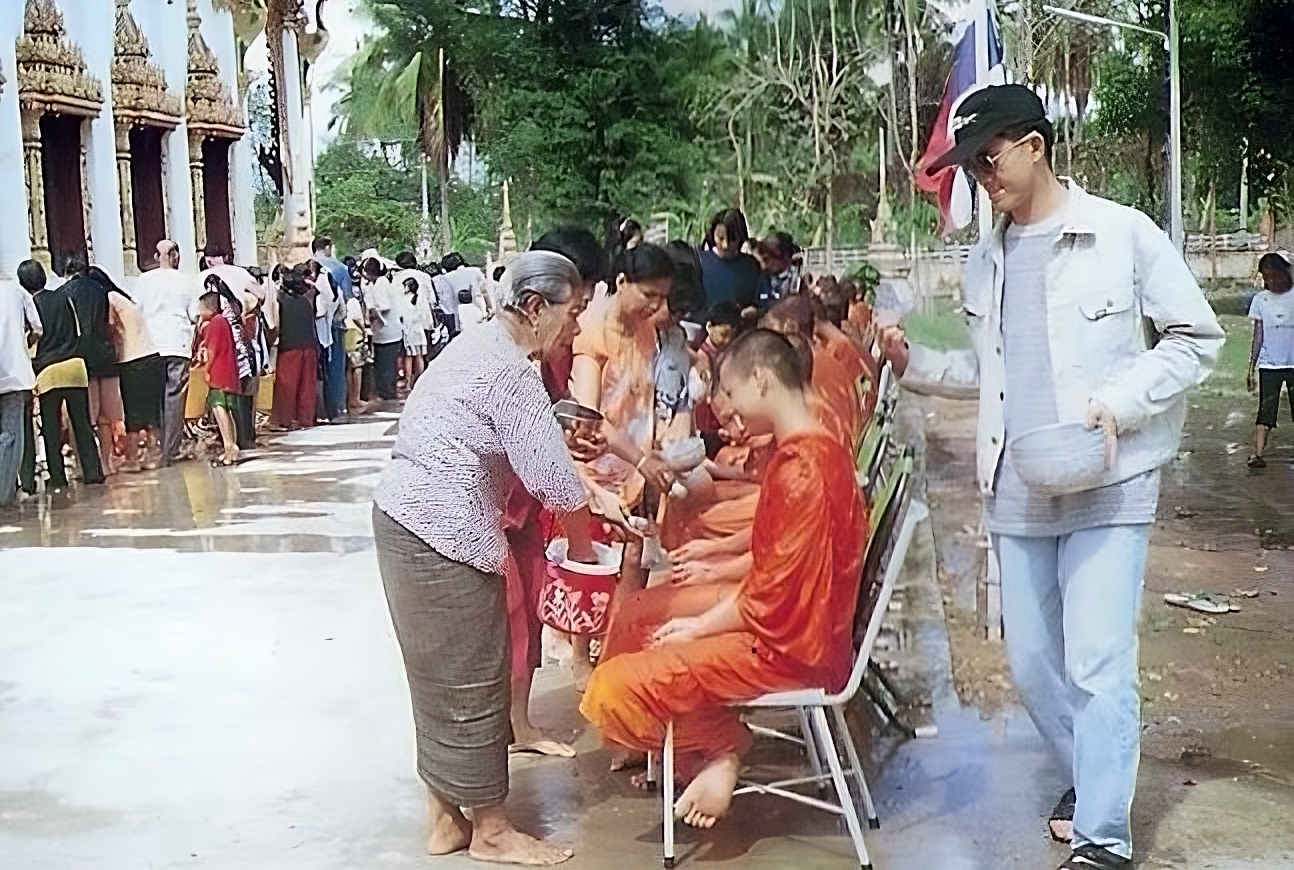
What Does Songkran Mean?
The word “Songkran” comes from the Sanskrit word Sangkranti, which refers to the movement of the sun and planets from one zodiac sign to another. Songkran in Thai thus refers to sun’s movement into the sign of Aries, signifying the start of a new year (i.e. new solar cycle). According to Brahmin priests, the movement of the sun from Pisces to Aries during Songkran is an auspicious time to make new beginnings and set new goals.
What Do the Days of Songkran Mean?
Songkran falls every year around April 13th, 14th, and 15th. Each day has a specific name and associated activities. This year (2024) Thailand’s Ministry of Culture is expanding the festivities and holding special events from April 1st thru April 21st. But the meaning of the traditional 3 days are as follows:
April 13th is called “Maha Songkran” (มหาสงกรานต์). Maha means “great” or “big,” and thus it signifies the importance of this day as the beginning of the new solar year (the day the sun moves into Aries). This is the day of the “Great Rising” when many of the traditional Songkran activities, such as visiting the temple to make merit, are performed in Thailand.
Maha Songkran is also a day of thorough cleaning, where everyone pitches in to clean homes and temples, sweeping away all the bad karma of the past to allow in the good karma of the coming year. In addition, old clothes are often donated to temples to help the poor and disadvantaged.
This first day of Songkran also has been designated as “National Elders Day” in Thailand, a day when the wisdom of the Thai elders are celebrated, and children honor the sacrifices and work their elders have made to build the prosperous world in which they live.
April 14th is called “Wan Nao” (วันเนา). In the Khmer language the word “nao” (neutral tone) means stay. Thus this is the day that you stay, relax, and meditate on how you will make the most of the coming year. Many people in Thailand refer to this day by pronouncing the word “nao” with a falling tone, which changes the meaning to “Rotten Day”. This refers to the belief that you shouldn’t do anything on this day that is not auspicious. In particular, you shouldn’t curse or quarrel with anyone — for if you do, your mouth will rot! If you quarrel with anyone on Wan Nao, you will be unlucky throughout the year.
The 2nd day of Songkran also has been designated as “Family Day” in Thailand, a day in which large extended Thai families gather together (many having traveled hundreds of miles back home from their workplaces in Bangkok) to share affection, memories, and great feasts of Thai food and traditional Sato rice wine.
April 15th is called Wan Thaloeng Sok (วันเถลิงศก), which means “The Day a New Era Begins”. On this 3rd day of Songkran, you should start doing good things, saying good things, thinking good things: demonstrating your firm positive commitment to making the coming year the best one yet. You should also go again to the Thai temple of your choosing to make merit and get a final blessing from the monks for the coming year.
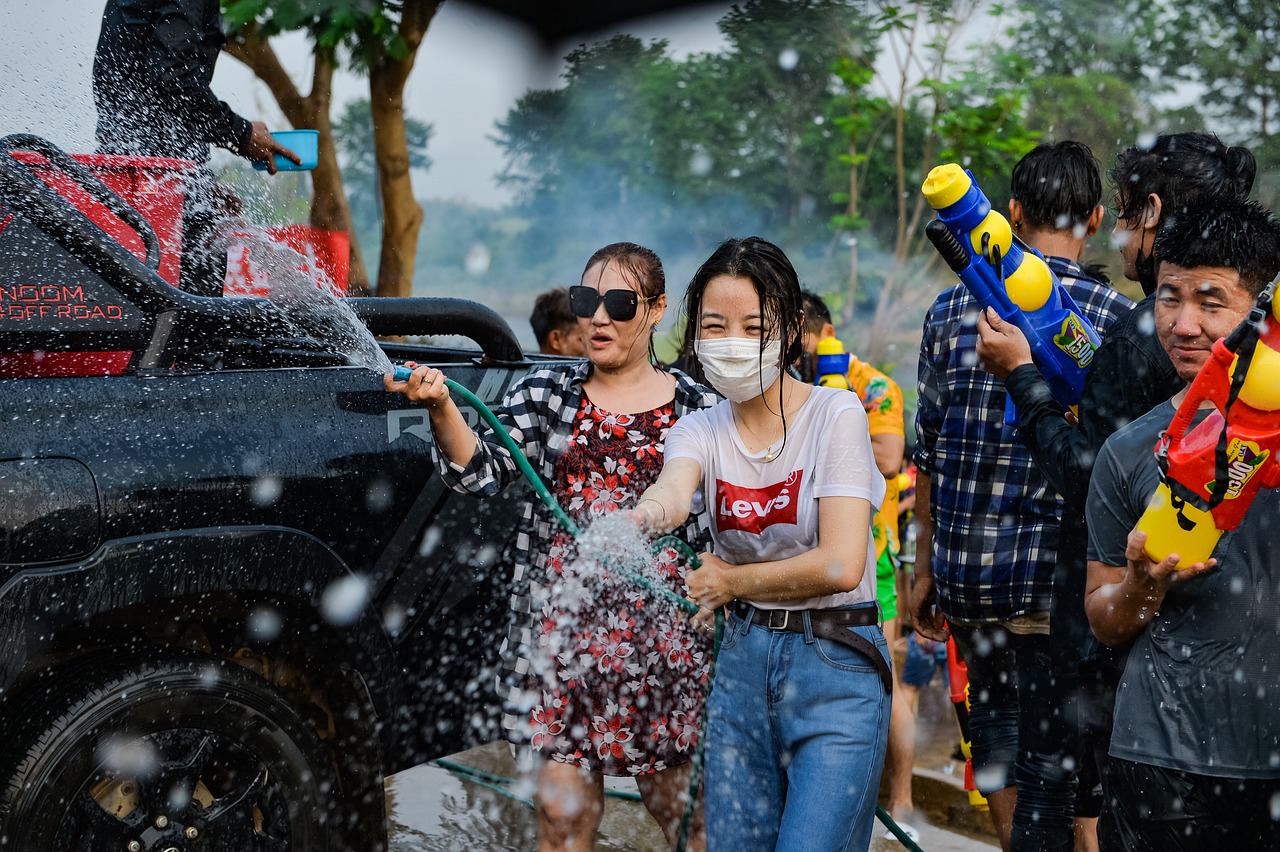
The Legend of the 7 Ladies of Songkran
According to Buddhist legend, Songkran originated from the death of the god named Kapila Brahma or Kapila Phrom (กบิลพรหม). In ancient times, a wealthy man who had no children was mocked by his drunkard neighbor for his lack of offspring. Desperate for a child, the rich man prayed to the Sun and Moon gods for a son, but his pleas went unanswered until he offered cooked rice to the tree god living in a banyan tree. The tree god granted the man’s wish, and he was blessed with a son named Thammabal.
Thammabal was a gifted child who learned three Vedas and the language of birds. Kapila Brahma, the god of creation, heard of Thammabal’s intelligence and decided to test him. He challenged the boy to answer a riddle: where is the glory of women and men located in the morning, during the day, and in the evening? If Thammaabal could not provide the answer in 7 days, he would be beheaded. If he answered correctly, Kapila would lose his head.
Thammabal could not find an answer and was about to lose the challenge when he overheard a conversation between a pair of eagles. The eagles revealed the answer, and Thammabal repeated it to Kapila Brahma. “At the face, chest, and feet”. Impressed with the boy’s cleverness, Kapila Brahma spared his life but honored his promise to be beheaded.
Kapila Brahma had seven daughters and feared that if his head fell to the ground, it would create a fire that would engulf the world. He asked his daughters to place his head on an elevated platform, called a phan, to prevent such a disaster. One of Kapila Brahma’s children, known as the Nang Songkran, and other angels formed a procession every year when the Sun entered Aries. The procession lasted for 60 minutes around Mount Meru, and the Nang Songkran sat, stood, reclined, or slept on the back of an animal depending on the time of day.
Over time, the name of the procession was shortened to Songkran. While Songkran has evolved into a modern-day celebration today, it still honors the ancient legend of Kapila Brahma and Thammabal, reminding people of the power of intelligence and the importance of respecting traditions.
The 7 ladies of Songkran refer to the different days of the week that Maha Songkran could be celebrated. Their names and the animal they ride, according to the Songkran legend, are as follows:
Sunday Songkran: Nang Tungsa Devi, riding a Garuda
Monday Songkran: Nang Korakathevee, riding a tiger,
Tuesday Songkran: Nag Nang Raksathewi, riding a pig.
Wednesday Songkran: Montha Dhevi, riding a donkey.
Thursday Songkran: Nang Kirinee Thewi, riding an elephant.
Friday: Nag Kimita Devi, riding a water buffalo.
Saturday: Nang Mahothornthewi, riding a peacock.
An image of the Lady Songkran for that particular year appears in some Songkran parades in Thailand, with participants seeking her divine protection against potential dangers in the coming year.
How to Pronounce Songkran
The Thai word Songkran (สงกรานต์) is pronounced sawng-krahn. Learn how to give appropriate holiday greetings in our post: Songkran Greetings in Thai and English!
- The Hidden Dharma of Thai Language & Culture - May 11, 2024
- The Royal Ploughing Ceremony in Thailand – A History - May 8, 2024
- Dying Well the Buddhist Way in Thailand - May 7, 2024
